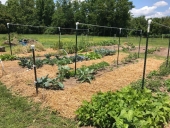
 5
5




Dirty hands + a sweaty handkerchief = hope for the future.

 5
5




 9
9




"The world is changed by your example, not your opinion." ~ Paulo Coelho

 7
7




Some places need to be wild

 8
8




 4
4




 3
3




"When the whole world is running towards a cliff, he who is running in the opposite direction appears to have lost his mind." C.S. Lewis
Visit https://themaineingredient.com for organic, premium dried culinary herbs that are grown, processed, and packaged in the USA.
 2
2




Dirty hands + a sweaty handkerchief = hope for the future.
 4
4




'What we do now echoes in eternity.' Marcus Aurelius
How Permies Works Dr. Redhawk's Epic Soil Series

 4
4








Cy said, "Now to the question of this post...can you have too thick of a layer of leaves on the surface of the plot? If so, what happens?
Invasive plants are Earth's way of insisting we notice her medicines. Stephen Herrod Buhner
Everyone learns what works by learning what doesn't work. Stephen Herrod Buhner










 5
5




Some places need to be wild
 3
3




Dirty hands + a sweaty handkerchief = hope for the future.




Cy Cobb wrote: I have been scoring lots of discarded pumpkins lately
Joy to the world
But what will come?
When the lights go down on everyone
I sure don't wanna be around here when the whistle blows










 1
1




Some places need to be wild




Dirty hands + a sweaty handkerchief = hope for the future.
 3
3




 4
4






 2
2




The best gardening course: https://gardenmastercourse.com
Permies.com FAQ
 2
2





|
There are no more "hours", it's centi-days. They say it's better, but this tiny ad says it's stupid:
Freaky Cheap Heat - 2 hour movie - HD streaming
https://permies.com/wiki/238453/Freaky-Cheap-Heat-hour-movie
|






